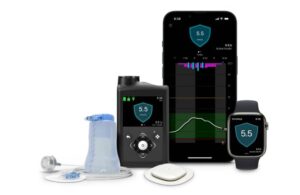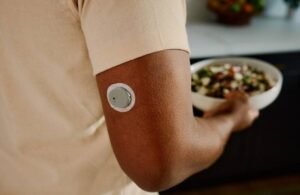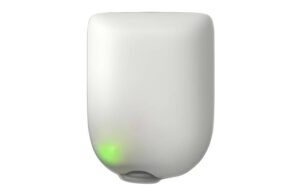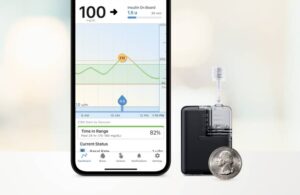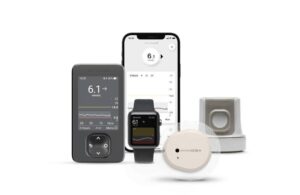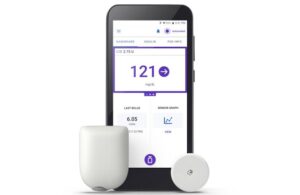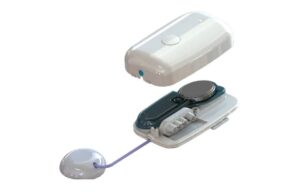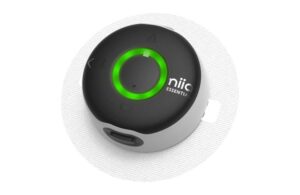From restless.co.uk
Many of us are taking steps to improve our health and boost our immune systems. We’ve previously written about the importance of nutrients like iron and vitamin D in maintaining immune health, but vitamin B12 is another key nutrient our body relies on.
Vitamin B12 deficiency is more common in older adults – affecting around one in 20 people aged 65 to 74 and one in 10 people aged 75 or over. But given the wide range of symptoms and the gradual rate at which they can appear, the condition can often be overlooked or confused with something else.
Luckily, there are plenty of foods that can be added to your diet to make sure you’re getting enough of this vital vitamin.
Below, we’ll explore the benefits of vitamin B12, how to spot the signs of deficiency, and which vitamin B12-rich foods you could incorporate into your meals.
WHAT IS VITAMIN B12?
Vitamin B12, also known as cobalamin, is one of eight B vitamins that play an essential part in keeping our bodies healthy.
It’s important for supporting the function of nerve cells, making red blood cells, DNA formation, and producing energy. But, there are many other benefits of B12, which we’ll look at in more detail below.
Our bodies can’t produce vitamin B12, so we need to get it from our diet. B12 is found naturally in animal products, but it’s also added to certain foods and is available as a supplement. People who have very low B12 levels might also get a B12 injection under recommendation from their GP.
Vitamin B12 is only needed in only very small amounts. According to the NHS, the recommended daily allowance (RDA) of vitamin B12 is around 1.5 micrograms for healthy adults.
WHY IS VITAMIN B12 IMPORTANT?
Vitamin B12 plays a critical role in several of our body’s key processes and there are powerful health benefits to making sure that we have enough in our diet. For example…
1. It can help to produce red blood cells
If you don’t have enough B12 in your system, your body can’t produce red blood cells as efficiently.
Then, because the red blood cells aren’t developed properly, they can’t move from your bone marrow into your bloodstream at a fast enough rate. This can lead to anaemia and cause symptoms like muscle weakness and fatigue.
2. It supports healthy, skin, hair, and nails
Because vitamin B12 is so crucial for producing new cells, you need adequate levels for healthy hair, skin, and nails.
B12 deficiencies can lead to hyperpigmentation of the skin, vitiligo, changes to your hair, nail discolouration, and angular stomatitis – where the corners of your mouth become red and cracked.
3. It may support bone health and prevent osteoporosis
One study found that people with low levels of B12 had a lower bone mineral density, which can increase the risk of osteoporosis.
4. It may help to keep your eyes healthy
Vitamin B12 is thought to reduce the risk of age-related macular degeneration – an eye disease that impacts your central vision.
Studies suggest that B12 may lower levels of homocysteine – an amino acid in the blood that’s linked to age-related macular degeneration.
5. It may help to reduce depression
Vitamin B12 plays a crucial role in producing serotonin, also known as the ‘happy hormone’, due to its effect on mood. Vitamin B12 deficiency is linked to decreased serotonin production, which can result in a depressed mood.
Studies show that people suffering from depression showed improved symptoms when receiving both B12 supplements and antidepressants, compared to people who received antidepressants alone.
To find out more about how to ease the symptoms of depression, take a look at our article; 10 things you can do to help yourself through feelings of depression.
6. It may promote brain health and improve memory
Vitamin B12 is thought to lower the risk of brain atrophy – which is the loss of neurons in the brain and linked to memory loss and dementia.
One study of patients with dementia showed that supplementing vitamin B12 and omega-3 fatty acids slowed mental deterioration. Another study found that low levels of B12 can cause poor memory performance.
7. It may help to improve energy levels
While there’s no solid evidence which proves that vitamin B12 can give you an energy boost, all B vitamins play a crucial role in the body’s energy production.
Plus, one of the most common signs of vitamin B12 deficiency is tiredness and a lack of energy.
8. It may improve heart health
Aside from being linked to macular degeneration, the amino acid homocysteine is also linked to an increased risk of heart disease.
Studies show that B12 helps decrease homocysteine levels, which may lower the risk of heart disease.
SIGNS OF VITAMIN B12 DEFICIENCY

Making sure that we get enough vitamin B12 is incredibly important for our health, and the good news is that because our bodies can store B12 for several years, serious B12 deficiency is rare.
Some of the most common signs of B12 deficiency include…
1. Pale or jaundiced skin
Due to the problems that low levels of B12 cause to your body’s red blood cell production, a common symptom of B12 deficiency is looking pale.
Being deficient in red blood cells can also cause an excess of bilirubin – a red/brown-coloured substance that the liver produces – to circulate in our blood. Having large amounts of bilirubin in your body can cause the skin and whites of your eyes to have a yellow tinge too.
2. Weakness or fatigue
As red blood cells transport oxygen to your body’s cells, when you’re deficient in B12, you may feel tired and weak.
3. Pins and needles
Because B12 supports the function of nerve cells, long-term B12 deficiency can put you at risk of nerve damage.
One of the first symptoms that your nerves are beginning to become damaged is the sensation of pins and needles.
4. Changes to mobility
If left untreated, the damage that B12 deficiency can cause to your nervous system can affect your balance and coordination – and even lead to changes in how you walk and move. It can also increase your risk of falling, which can lead to a range of injuries.
5. Breathlessness and dizziness
B12 deficiency can cause anaemia, so a common symptom is feeling short of breath or dizzy, particularly when you physically exert yourself.
6. Changes in mood
Many people suffering from B12 deficiency report changes in mood and may exhibit signs of depression.
7. Mouth ulcers and inflamed tongue
People suffering from B12 deficiency sometimes have glossitis, which is a red and inflamed tongue that can look smoother than normal.
Other oral symptoms like mouth ulcers are also sometimes seen.
12 FOODS THAT ARE HIGH IN VITAMIN B12

Because the body can’t make B12 by itself, we need to get it from our diet or from supplements.
Vitamin B12 is mainly found in animal products – like meat, fish, and eggs. However, many common plant-based foods are fortified with B12, and can be good sources of this vitamin too.
So, which foods are good sources of vitamin B12?
2. Clams
Clams are packed with nutrients and contain very high amounts of vitamin B12. They also contain iron and plenty of antioxidants.
3. Eggs
Eggs are a great source of B vitamins – especially B2 and B12. Egg yolks contain more B12 than egg whites, and the B12 in yolks is easier to absorb too.
4. Fortified cereals
These days, almost all cereals are fortified with nutrients (including B12), so these are a great source of plant-based B12.
Cereals also usually contain vitamin A, folate, iron, and calcium, which are essential for building healthy bones, making red and white blood cells, and supporting immune health.
5. Sardines
Sardines are especially nutritious because aside from being high in vitamin B12, they also contain high amounts of the minerals phosphorus, calcium, and potassium.
These help to regulate blood pressure, maintain strong bones and teeth, and manage how your body uses energy. As they’re a good source of omega-3 fatty acids, they also have many other health benefits.
6. Tuna
Tuna contains high concentrations of B12, particularly in the darker muscles right underneath the skin. Tuna is also high in phosphorus, selenium, and vitamins A and B3 – which can protect your eyes, lower LDL cholesterol, and help prevent heart disease.
7. Milk and yoghurt
A cup of milk or yoghurt a day can make for an excellent source of vitamin B12, and is also a reliable source of calcium and vitamin D.
Yoghurt also contains probiotics – which are particularly beneficial for digestive health.
8. Cheese
Cheese is another rich source of vitamin B12. Swiss cheese (at 36% daily value per ounce) and mozzarella (at 27% daily value per ounce) have some of the highest amounts.
The daily value (DV) is the percentage of the recommended dietary allowance. One ounce of cheese is roughly equal to a slice of cheese that’s large enough to cover the surface of a standard slice of bread.
9. Non-dairy milk
Non-dairy milks – like oat, almond, rice, and soya milk – are fortified with high amounts of B12 and are another great source of plant-based B12.
10. Trout
Rainbow trout contains plenty of healthy fats and B vitamins – including vitamin B12.
It also contains minerals such as manganese, phosphorus, and selenium, which can improve bone health, reduce inflammation, and grow and repair cells.
11. Salmon
Salmon might be most known for containing high levels of omega-3 fatty acids, but it’s also a great source of B vitamins, including B12.
12. Nutritional yeast
Nutritional yeast is a key ingredient of any vegan kitchen, and it’s a great plant-based source of many vitamins, (including B12), as well as protein and minerals.
CAN YOU GET ALL THE B12 YOU NEED FROM YOUR DIET ALONE?
While it’s possible to get all the vitamin B12 you need from the foods you eat, in certain cases, a B12 supplement might be useful – particularly if you’re at greater risk of becoming deficient.
People most at risk of a B12 deficiency are those who don’t get enough in their diet, or who aren’t able to absorb enough from the foods they eat. This can include older adults, pregnant or breastfeeding women, and people who…
- are taking antacids long-term
- are taking the diabetes drug metformin
- have had bowel or stomach surgery
- are following a plant-based diet
However, while vegans are more at risk of B12 deficiency because B12 is only naturally found in animal products, you don’t have to automatically take supplements if you follow a plant-based diet.
The amount of B12 needed each day is small, and because many plant-based foods are fortified with high levels of B12, it’s entirely possible that you can still get enough from your diet alone.
However, it’s important for vegans to check that the foods that they eat do contain B12.
If you’d like some ideas for recipes that are particularly rich in vitamin B12, then check out these meal ideas from Eat This Much. And, if you follow a plant-based diet, take a look at these vegan recipes that are high in B12 from Live Kindly.
WHAT TO DO IF YOU'RE WORRIED YOU'RE NOT GETTING ENOUGH B12

It’s important to be aware that not all vitamin B12 deficiency is caused by health problems or diet. It can also be caused by a lack of intrinsic factors (proteins required to absorb B12).
A lack of intrinsic factors becomes more common as we get older, and is linked with pernicious anaemia – an autoimmune condition that affects your stomach.
If you’re worried you’re not getting enough B12 from your diet, you should make an appointment with your GP to get a blood test. If your B12 levels are low, your GP will also be able to advise you on supplementation.
According to the NHS, there isn’t any evidence to suggest that taking extra B12 causes any harm (unless you’re pregnant or breastfeeding), but it’s still important to make sure that any supplements are safe dosage-wise. Adults shouldn’t take more than 2mg a day of B12 supplements unless specifically advised to by their GP.
Vitamin B12 supplements come in many forms, including as a liquid, pills that you swallow, chewable sweets, or even supplements that dissolve under your tongue.
If your levels are exceptionally low (which can be determined by a blood test), your GP might offer you a vitamin B injection.
FINAL THOUGHTS...
Vitamin B12 is a vital nutrient that your body needs for many different purposes, and being deficient can lead to health complications.
Most people are able to get enough B12 from their diet alone, as it’s found in many animal products and fortified foods. But, those at risk of B12 deficiency should have a chat with their GP or health practitioner about the possibility of taking supplements – because dosages will vary according to your individual needs.
For more tips on essential vitamins and minerals, head over to the diet and nutrition section of our website.
